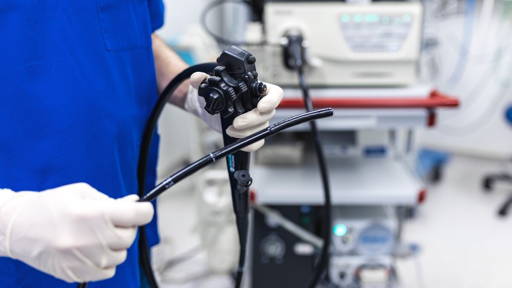For a portion of patients with epilepsy, resective surgery in the epileptogenic zone (EZ) can help prevent seizures. That surgery involves removing part of the brain tissue where the seizures originate. Determining the exact location of the EZ is done with a number of tests, including an MRI, EEG and intracranial EEG. Large language models (LLMs), such as ChatGPT, may help determine the exact location of the EZ more accurately and improve the success rate of resective surgery, which currently hovers between 50 and 60 percent, new research shows.
More than 70 million people worldwide suffer from epilepsy, one of the most common neurological disorders characterized by recurrent seizures. About one-third of epilepsy cases cannot be controlled with medication. For these patients, surgical resection of the epileptogenic zone (EZ) can be an effective option to reduce or eliminate seizures.
To identify the EZs, patients undergo a series of tests, including MRI, electroencephalography or EEG and intracranial EEG. Epileptologists use these data and images to describe what is known as seizure etiology - the symptoms and behaviors during seizures. This information is used to predict the location of EZs.
Difference in language used
However, the language epileptologists use to describe seizure semiology can vary from one epilepsy center to another. “Different epilepsy centers may use different terms to describe the same seizure semiology,” said Feng Liu, assistant professor in the Department of Systems and Enterprises, Schaefer School of Engineering and Science at Stevens Institute of Technology.
“For example, the terms 'asymmetric posture' and 'asymmetric tonic activity' can be used to describe the same thing. There are many terms that can refer to the same thing, but different centers can use different terminology to describe it,” Liu said. He gives as an example the posture where one arm or leg is extended while the other is bent.
That creates some inconsistency, which presents challenges for surgeons. Because of the descriptive nature of seizure semiology, large language models or LLMs such as ChatGPT, trained on a huge cohort of public data, can be a valuable tool to help identify EZs.
Liu and his team of collaborators evaluated the clinical value of using ChatGPT to interpret semiology of seizures to predict EZ location. “LLMs, such as ChatGPT, can be valuable tools for analyzing complex textual information, helping interpret seizure semiology descriptions and accurately locating epileptogenic zones,” Liu said.
Survey of epileptologists
For the study, the team interviewed five qualified epileptologists who completed an online survey with 100 questions about locating EZs based on seizure semiology descriptions. The team then used ChatGPT to perform the same task and compared ChatGPT's performance with that of epileptologists.
This showed that ChatGPT's answers matched or outperformed those of epileptologists with respect to the regions where epileptogenic zones are usually located, such as the frontal lobe and temporal lobe of the brain. Epileptologists, however, gave more accurate answers in regions where EZs rarely occur, such as the insula and cingulate cortex. These findings were published in the Journal of Medical Internet Research.
To further improve the performance of LLMs, the team built the first LLM specifically for interpreting seizure etiology, called EpiSemoLLM, hosted on a GPU server at the Stevens Institute of Technology. This platform can be a useful assistant for neurosurgeons and epileptologists in decision-making during the pre-surgical workup phase. “Our results show that LLMs can be a valuable tool in preoperative assessment for epilepsy surgery, but the best results can be achieved when humans and AI work together,” Liu said.
LLM’s in healthcare
Generative AI and LLMs have long been familiar to healthcare. Not so long ago the LUMC was the first medical school in the Netherlands to start AI language model programming internships for medical students, among others. When a study requires data collection from hundreds or many thousands of patient records, it's a labor-intensive task that takes many hundreds of hours. It is precisely for these tasks that LLM-based AI solutions could be put to good use. For this, however, the physician-researcher will have to have the right programming knowledge.









